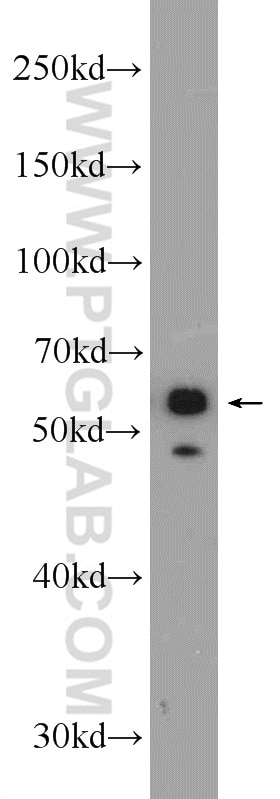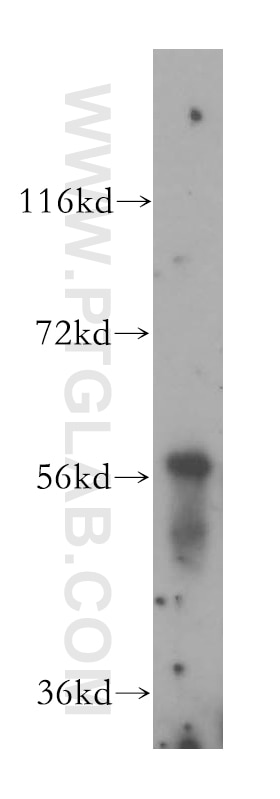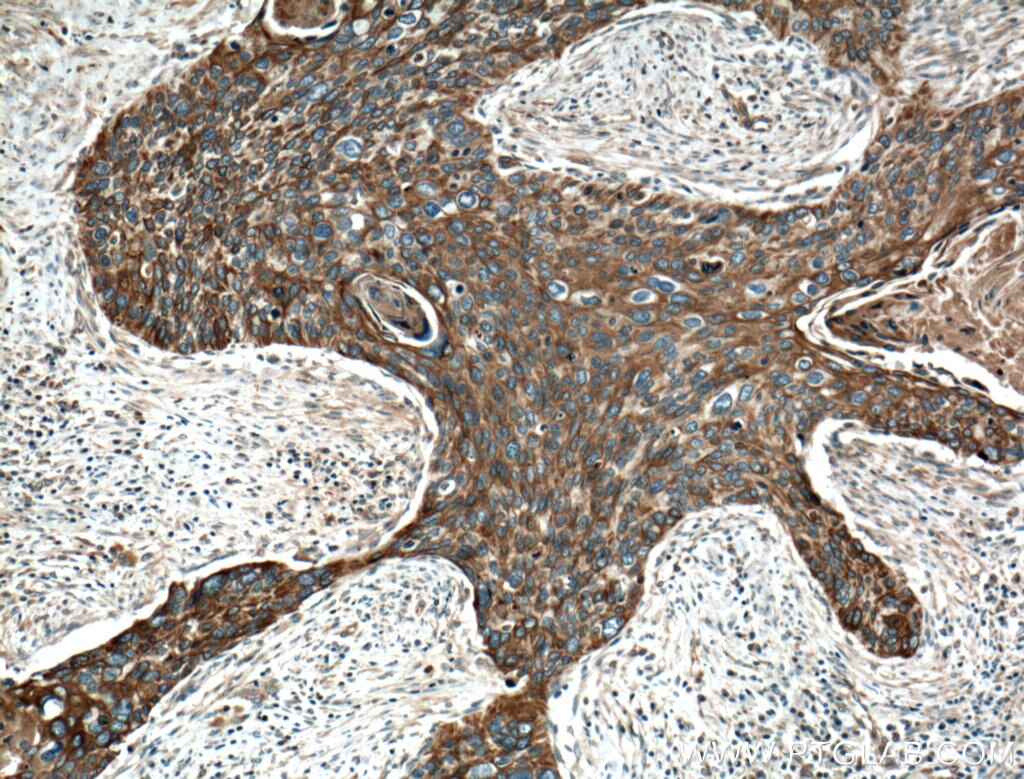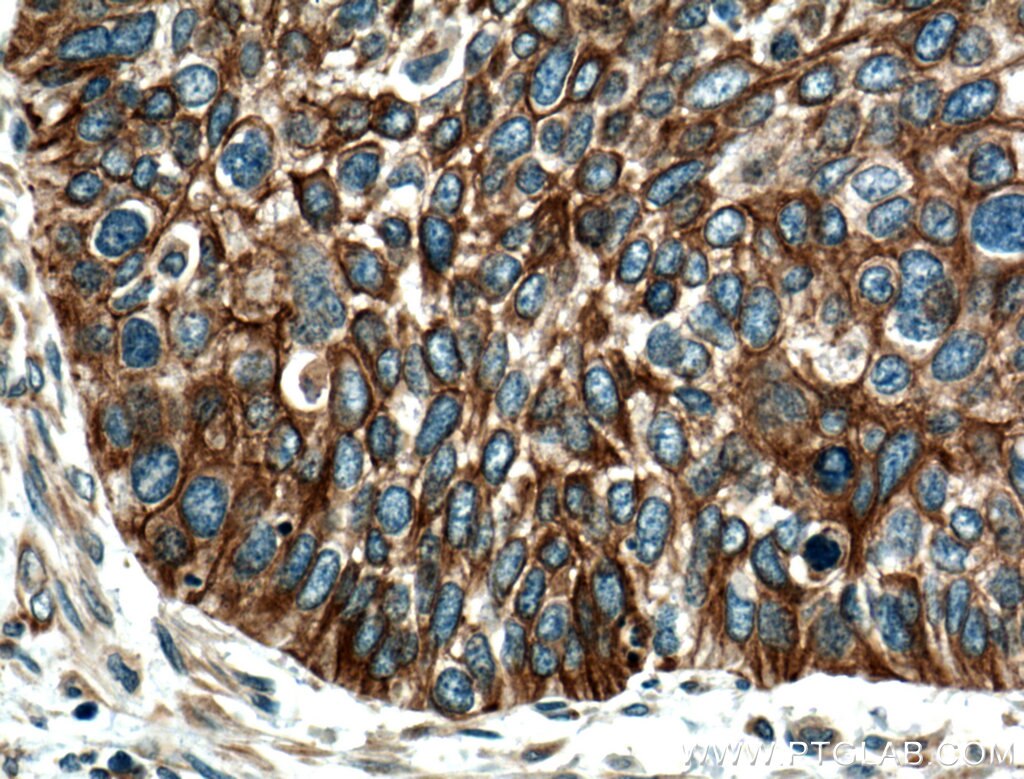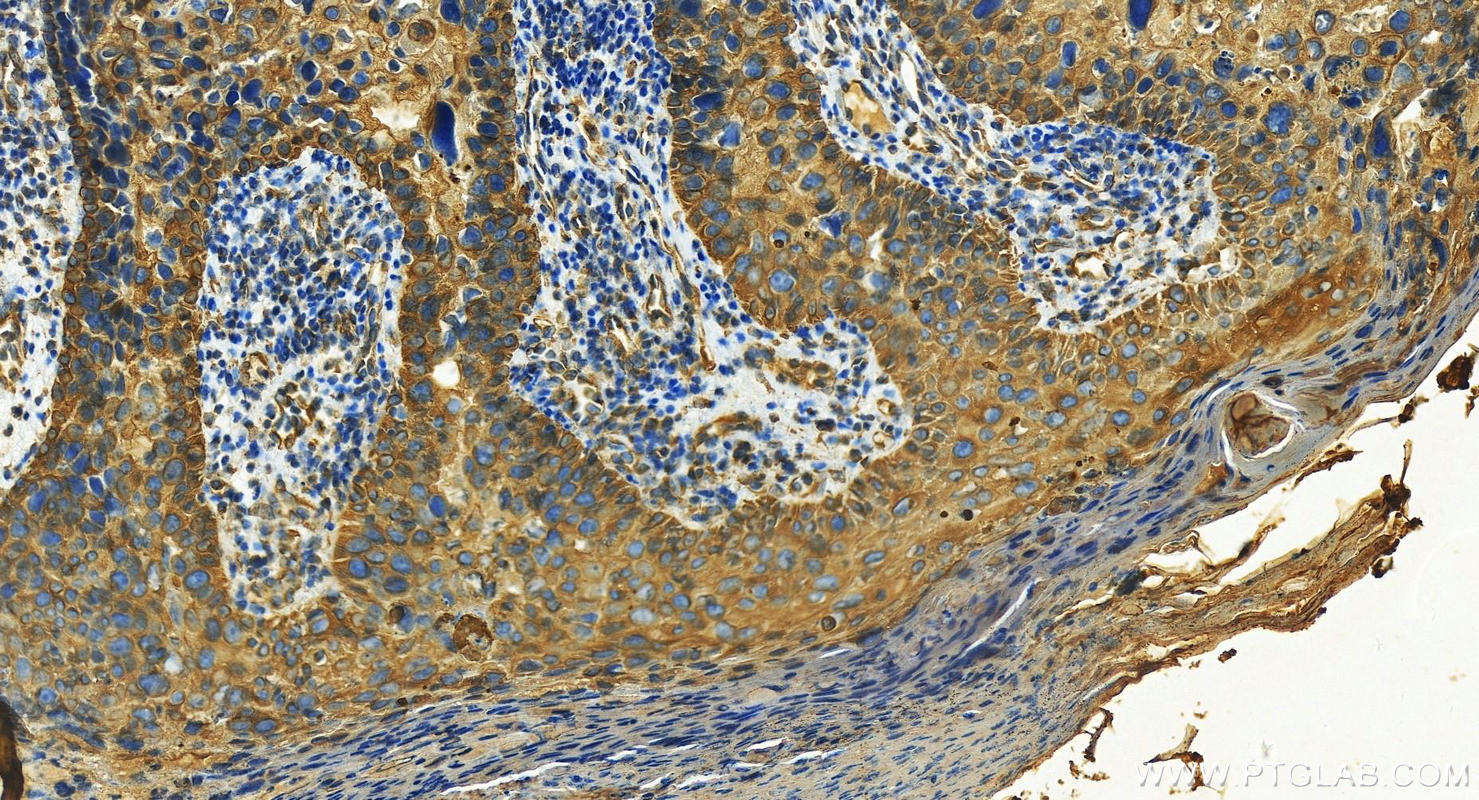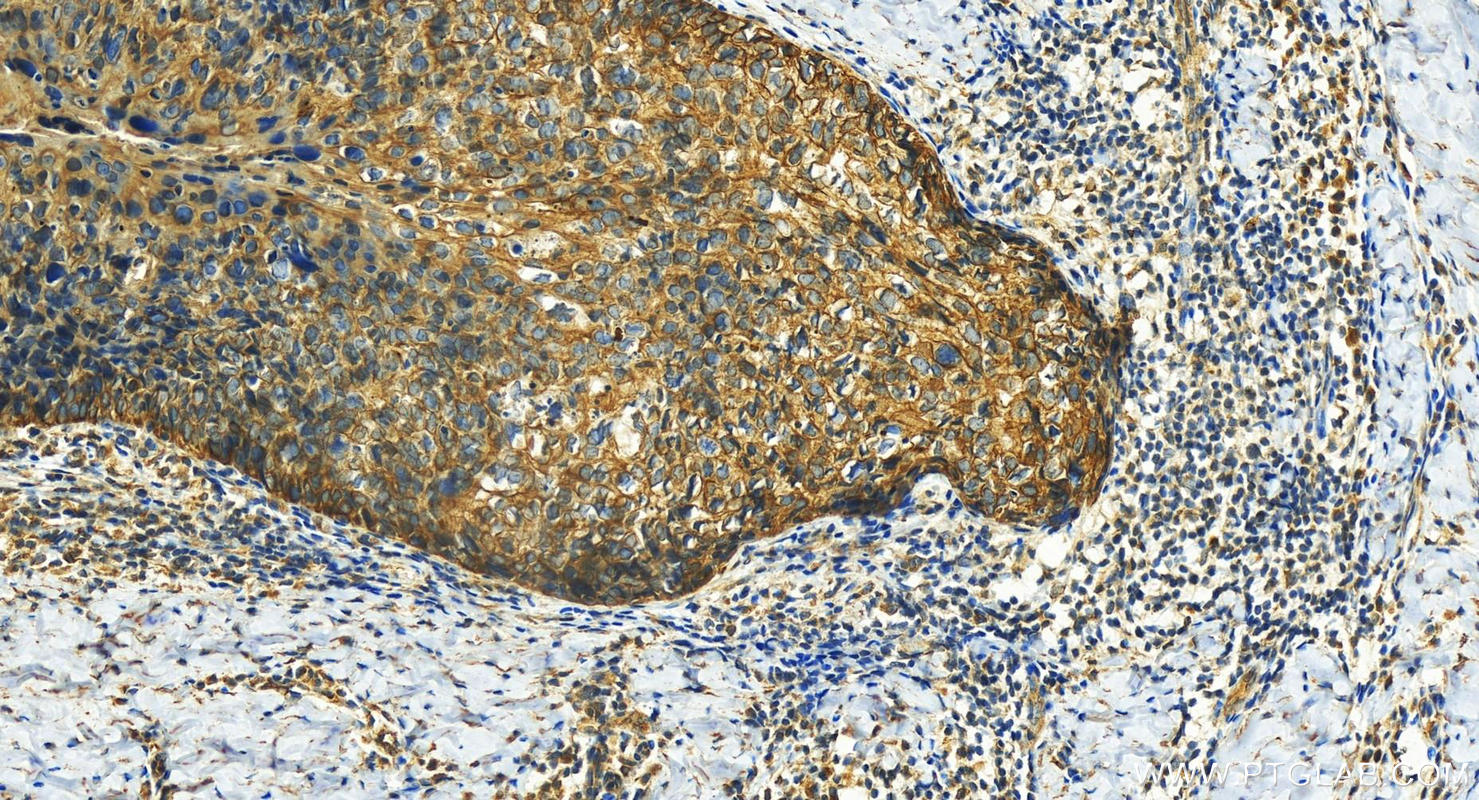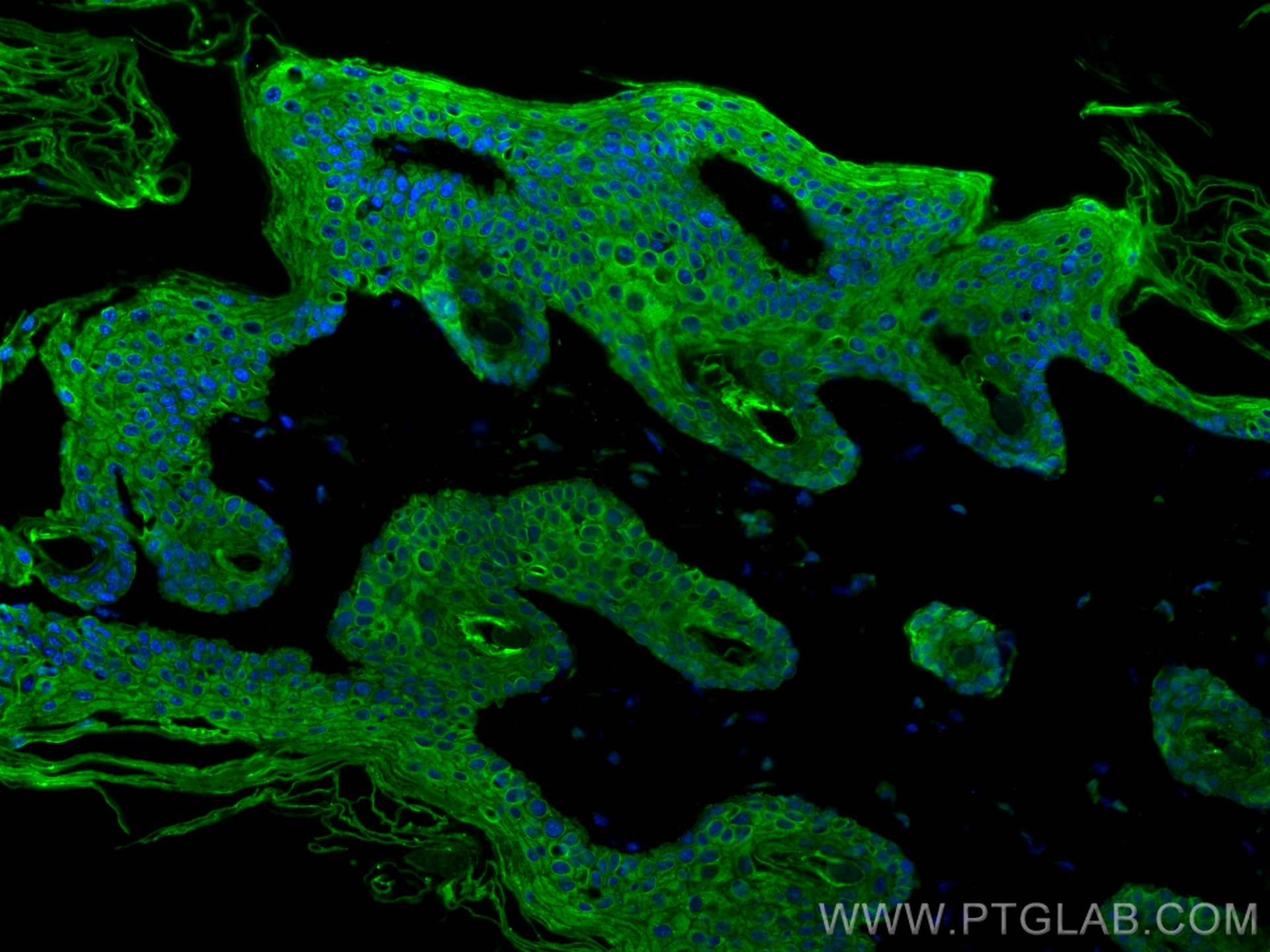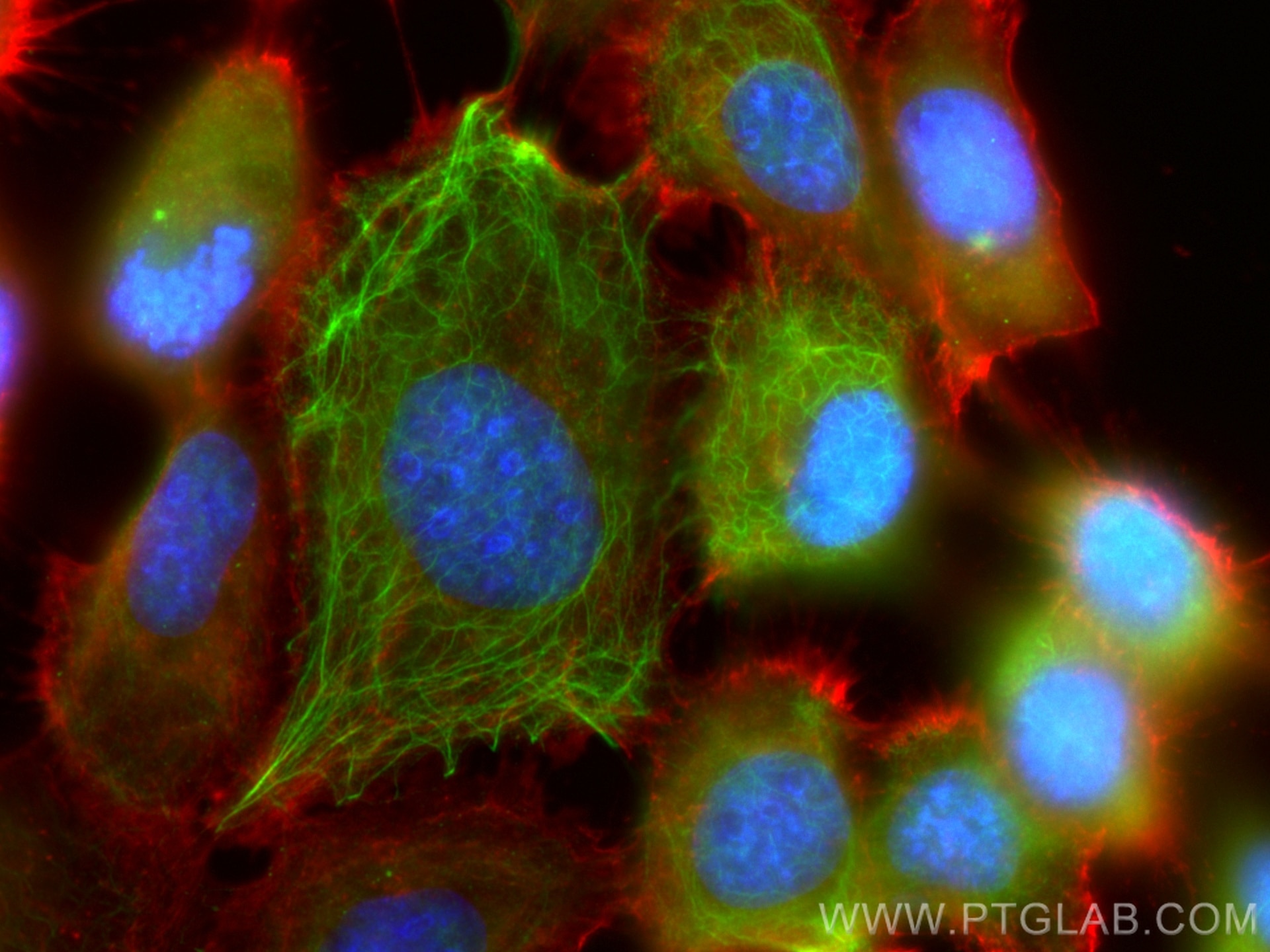Validation Data Gallery
Tested Applications
| Positive WB detected in | A431 cells, human bladder tissue |
| Positive IHC detected in | human cervical cancer tissue, human bowen disease Note: suggested antigen retrieval with TE buffer pH 9.0; (*) Alternatively, antigen retrieval may be performed with citrate buffer pH 6.0 |
| Positive IF-P detected in | mouse skin tissue |
| Positive IF/ICC detected in | A431 cells |
Recommended dilution
| Application | Dilution |
|---|---|
| Western Blot (WB) | WB : 1:500-1:1000 |
| Immunohistochemistry (IHC) | IHC : 1:50-1:500 |
| Immunofluorescence (IF)-P | IF-P : 1:50-1:500 |
| Immunofluorescence (IF)/ICC | IF/ICC : 1:200-1:800 |
| It is recommended that this reagent should be titrated in each testing system to obtain optimal results. | |
| Sample-dependent, Check data in validation data gallery. | |
Published Applications
| WB | See 1 publications below |
| IHC | See 2 publications below |
| IF | See 5 publications below |
Product Information
16572-1-AP targets Cytokeratin 4 in WB, IHC, IF/ICC, IF-P, ELISA applications and shows reactivity with human, mouse samples.
| Tested Reactivity | human, mouse |
| Cited Reactivity | human, mouse |
| Host / Isotype | Rabbit / IgG |
| Class | Polyclonal |
| Type | Antibody |
| Immunogen |
CatNo: Ag9854 Product name: Recombinant human KRT4 protein Source: e coli.-derived, PGEX-4T Tag: GST Domain: 184-534 aa of BC042174 Sequence: NLLQQQTTTTSSKNLEPLFETYLSVLRKQLDTLGNDKGRLQSELKTMQDSVEDFKTKYEEEINKRTAAENDFVVLKKDVDAAYLNKVELEAKVDSLNDEINFLKVLYDAELSQMQTHVSDTSVVLSMDNNRNLDLDSIIAEVRAQYEEIAQRSKAEAEALYQTKVQQLQISVDQHGDNLKNTKSEIAELNRMIQRLRAEIENIKKQCQTLQVSVADAEQRGENALKDAHSKRVELEAALQQAKEELARMLREYQELMSVKLALDIEIATYRKLLEGEEYRMSGECQSAVSISVVSGSTSTGGISGGLGSGSGFGLSSGFGSGSGSGFGFGGSVSGSSSSKIISTTTLNKRR 相同性解析による交差性が予測される生物種 |
| Full Name | keratin 4 |
| Calculated molecular weight | 534 aa, 57 kDa |
| Observed molecular weight | 57 kDa |
| GenBank accession number | BC042174 |
| Gene Symbol | Cytokeratin 4 |
| Gene ID (NCBI) | 3851 |
| RRID | AB_2134041 |
| Conjugate | Unconjugated |
| Form | |
| Form | Liquid |
| Purification Method | Antigen affinity purification |
| UNIPROT ID | P19013 |
| Storage Buffer | PBS with 0.02% sodium azide and 50% glycerol{{ptg:BufferTemp}}7.3 |
| Storage Conditions | Store at -20°C. Stable for one year after shipment. Aliquoting is unnecessary for -20oC storage. |
Background Information
Keratins are a large family of proteins that form the intermediate filament cytoskeleton of epithelial cells, which are classified into two major sequence types. Type I keratins are a group of acidic intermediate filament proteins, including K9-K23, and the hair keratins Ha1-Ha8. Type II keratins are the basic or neutral courterparts to the acidic type I keratins, including K1-K8, and the hair keratins, Hb1-Hb6. Keratin 4 is a type II cytokeratins. It is specifically found in differentiated layers of the mucosal and esophageal epithelia together with keratin 13.
Protocols
| Product Specific Protocols | |
|---|---|
| IF protocol for Cytokeratin 4 antibody 16572-1-AP | Download protocol |
| IHC protocol for Cytokeratin 4 antibody 16572-1-AP | Download protocol |
| WB protocol for Cytokeratin 4 antibody 16572-1-AP | Download protocol |
| Standard Protocols | |
|---|---|
| Click here to view our Standard Protocols |
Publications
| Species | Application | Title |
|---|---|---|
Nature A single-cell atlas of the airway epithelium reveals the CFTR-rich pulmonary ionocyte. | ||
Development Novel dynamics of human mucociliary differentiation revealed by single-cell RNA sequencing of nasal epithelial cultures. | ||
Int J Mol Sci Early Clinical Outcomes of the First Commercialized Human Autologous Ex Vivo Cultivated Oral Mucosal Epithelial Cell Transplantation for Limbal Stem Cell Deficiency: Two Case Reports and Literature Review | ||
Ann Diagn Pathol The molecular-based differentiation of Heck's disease from its mimics including oral condyloma and white sponge nevus. | ||
Oncotarget Significance of the NOR1-FOXA1/HDAC2-Slug regulatory network in epithelial-mesenchymal transition of tumor cells. | ||
Cell Rep An Immunocompetent Mouse Model of HPV16(+) Head and Neck Squamous Cell Carcinoma. |

